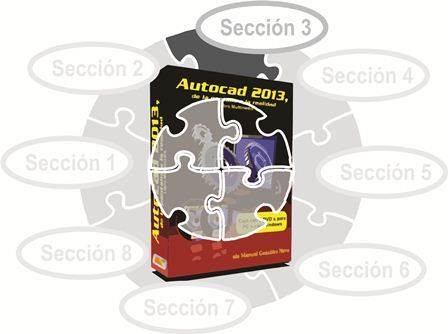Reference and Constraints with AutoCAD - Section 3

CHAPTER 15: THE SYSTEM OF PERSONAL COORDINATES
In the 3 chapter of this guide we study the coordinate system, the fundamental basis for drawing exact drawings, not only in Autocad, but in technical drawing in general. In this chapter we also study how to introduce Cartesian and polar, absolute and relative coordinates. So now it is clear that thanks to the Cartesian plane, or coordinate system, we can define the position of any point on the screen with respect to a point called origin only with the values of the X axis and the Y axis in a two-dimensional drawing and adding the Z axis in a three-dimensional.
By extension, in a drawing with already created objects, the position of a point of origin is also relative. That is, if we decide that any point on the screen has coordinates X = 0, Y = 0 and Z = 0, then the coordinates of all the other points of our drawing will be redefined with respect to that origin. In short, that is what the Personal Coordinates System (SCP) is about, being able to give the coordinates of origin at any point, but also defining the meaning of each one of the Cartesian axes in a personalized way. Therefore, there are many options for the creation of an SCP. But let's see it systematically.
15.1 The SCP icon
The SCP icon, in the default Autocad interface, is located in the lower left corner of the screen, precisely at the point of origin, where X = 0 and Y = 0. From there, the X axis has its positive values on the right and those on the Y axis upwards, that is, the screen corresponds to the 1 quadrant as seen in section 3.2. In turn, the Z axis is an imaginary line perpendicular to the screen, whose positive values go in the direction of the user's eyes from the plane formed by the surface of that same screen. However, the icon of the SCP can also be configured to always remain in the lower left corner of the screen, even if its coordinates do not match the original values, so that the icon always fulfills its function of signaling the direction of its axes in the drawing. This and other features can be configured with the contextual menu that appears when selecting the icon itself.
When we use the 2D version of the icon, the Z axis stops appearing, this is clearly seen when we use an isometric view of the drawing area.
In a two-dimensional drawing, as can be seen, the use of one or the other icon is really indistinct. But the same can not be said for the 2D icon in a three-dimensional drawing. However, the change of style in the dialog box is so simple that the user will simply use the one that best suits them in each case. The rest of the characteristics of the dialogue box are almost anecdotal, as you will have confirmed: what color you want for the icon in the model space and paper space (questions that will be subject of study in the 29 chapter), what thickness you want for the lines of the icon in 3D and what size they will have on the screen either.
All these options of the icon do not create any Personal Coordinate System, since they do not modify the point of origin at all, but it was important to review it because it is this icon that will easily show us which System of Coordinates we are using. To create an SCP we will use the command or tools of the following section.

